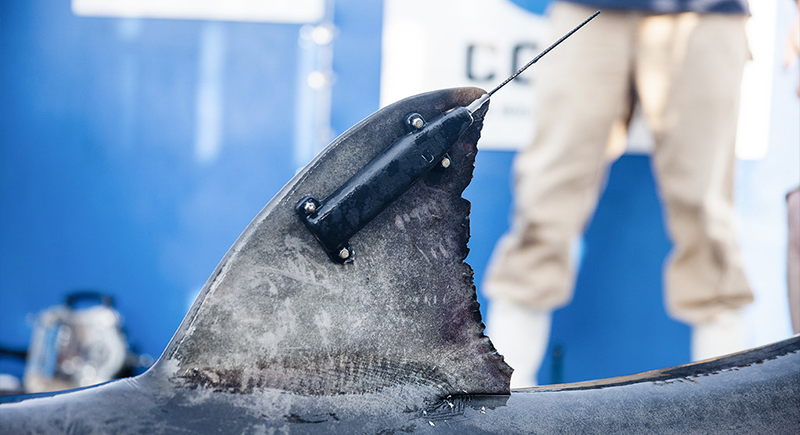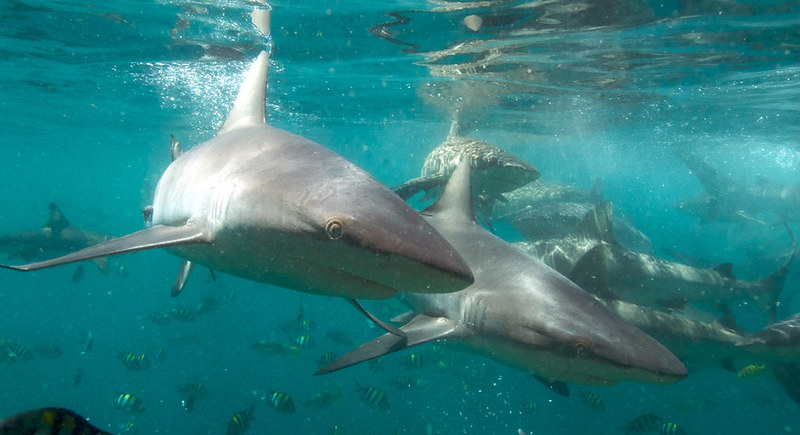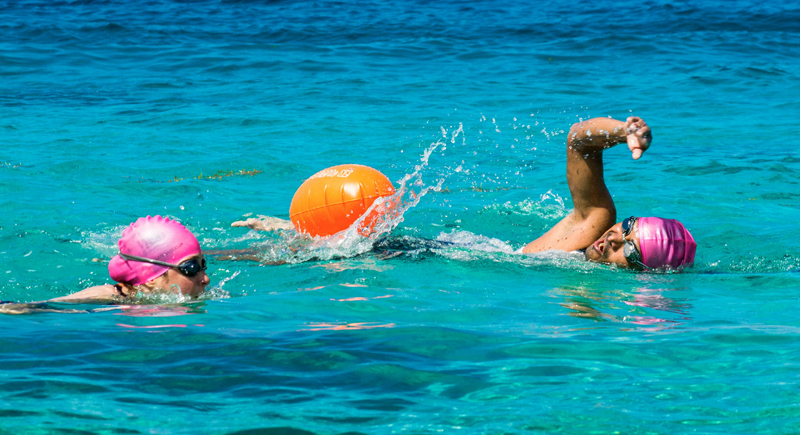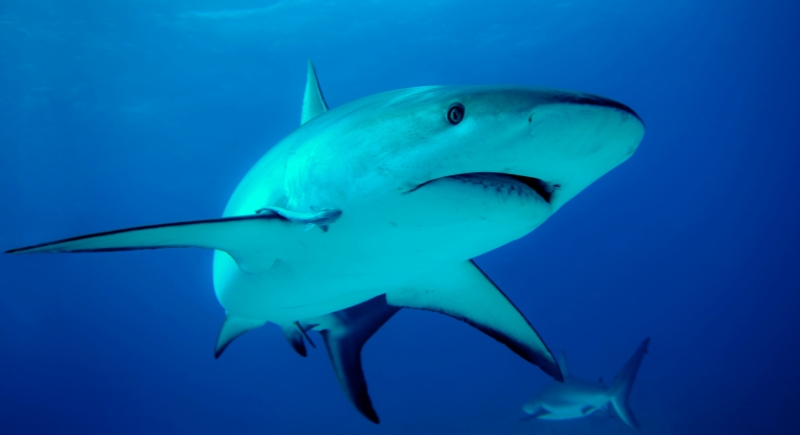17 Things You Should Know About Shark Attacks
Sharks have fueled nightmares for decades, but most of what people think they know about these creatures is shaped by blockbuster movies and exaggerated news reports. The truth is, that shark attacks are rare, and these animals aren’t lurking in the waves waiting for their next human meal. Still, it’s smart to understand how sharks behave, why attacks happen, and how to reduce your risk if you spend time in the ocean. Here’s what you need to know.
Shark Attacks Are Very Rare

Credit: Wikimedia Commons
For all the fear surrounding sharks, actual attacks are few and far between. Every year, millions of people swim, surf, and dive in the ocean, yet only a handful of encounters turn into injuries. Fatalities are even rarer. To put things into perspective, you’re statistically more likely to die from a falling coconut, a lightning strike, or even a vending machine accident than from a shark attack.
Punching a Shark Isn’t Advisable

Credit: Wikimedia Commons
There’s an old belief that if a shark gets too close, a well-placed punch to the nose will send it packing. While it might work in a pinch, it’s not exactly a foolproof strategy. Sharks are fast, and if you miss, you might find your hand dangerously close to its mouth. Instead, experts recommend maintaining eye contact, staying as calm as possible, and slowly backing away while keeping your limbs close to your body. If the shark does make contact, targeting its sensitive eyes or gills is a better move than trying to land a perfect jab on its snout.
Very Few Species of Sharks Attack

Credit: Canva
With over 500 species of sharks swimming in the world’s oceans, only a handful are known to pose any threat to humans. Great white sharks, tiger sharks, and bull sharks are responsible for most recorded attacks, but even they aren’t actively hunting people. In reality, the vast majority of sharks—everything from deep-sea lanternsharks to gentle giants like whale sharks—pose zero risk to humans.
Most Shark Attacks Are on Men

Credit: flickr
Shark attack statistics show that men are bitten far more often than women, and it’s not because sharks have a preference. The likely explanation is that men tend to participate in ocean activities like surfing, diving, and spearfishing more frequently than women, which increases their exposure. More time in the water naturally leads to more encounters.
Most Attacks Are Unintentional

Credit: flickr
Sharks don’t have the best eyesight, and when visibility is low, they rely on silhouettes to identify prey. Unfortunately, from below, a surfer paddling on a board looks strikingly similar to a seal. That’s why many attacks involve a quick bite followed by the shark realizing its mistake and swimming away. Unlike their portrayal in movies, sharks don’t crave human flesh—they much prefer fatty marine mammals or fish.
The World’s Shark Population Is Decreasing

Credit: Canva
Sharks may be feared, but they’re the ones in real danger. Overfishing, habitat destruction, and climate change have put many species at risk, with some populations dropping by more than 90% in the last few decades. This is bad news for the ocean, as sharks help regulate marine ecosystems by keeping fish populations in check. A decline in sharks leads to imbalances that can ripple through the entire food chain.
You Can Track Sharks Online

Credit: flickr
Curious about where sharks are swimming? Thanks to modern tracking technology, you can follow tagged sharks in real time through online databases like OCEARCH. These satellite-tagged sharks provide valuable data on migration patterns, hunting grounds, and even unexpected behaviors. It’s a great way to learn more about these creatures and debunk some myths in the process.
Sharks Follow Food

Credit: flickr
If you’re wondering why sharks appear in certain areas, the answer is almost always food. Sharks are apex predators, and they go where the prey is. Schools of fish, seals, and sea turtles attract them to specific locations. If an area suddenly sees more shark activity, it’s likely due to a natural shift in the food chain rather than an unexplained attraction to humans.
Fewer Shark Attacks Happen in Freshwater

Credit: Canva
Most sharks need saltwater to survive, but there are exceptions. Bull sharks are one of the few species that can tolerate freshwater and have been found swimming in rivers and lakes, even as far inland as Illinois. That being said, shark attacks in freshwater environments are exceedingly rare. If you’re swimming in a lake, a shark is the last thing you need to worry about.
Sharks Are More Active at Dawn and Dusk

Credit: flickr
Many sharks are crepuscular, meaning they hunt primarily at dawn and dusk. During these times, visibility is lower, and marine life is more active, which makes it easier for sharks to ambush prey. To minimize your chances of an encounter, it’s best to avoid swimming in the early morning or evening hours, especially in areas known for shark activity.
Most Attacks Happen in Shallow Water

Credit: flickr
It might seem like deeper waters are riskier, but most shark attacks actually occur in shallow areas close to shore. This is where people tend to swim and surf, and it’s also where baitfish and other marine life gather. A shark following a school of fish into the shallows might accidentally bump into a human, leading to an unintended bite.
Wearing Bright Colors Can Attract Sharks

Credit: pexels
There’s a reason some divers and spearfishers avoid wearing bright yellow gear. Sharks have limited color vision, but they do notice contrast. Lighter, brighter colors—especially yellow and orange—can stand out in murky water, potentially drawing unwanted attention. It’s not a guarantee that a shark will approach, but if you’re aiming for subtlety, stick to darker shades.
Splashing and Erratic Movements Can Draw Attention

Credit: pexels
Sharks are highly attuned to movement, and erratic splashing can mimic the behavior of a wounded fish—an easy target. If you’re in an area where sharks are present, staying as calm as possible and avoiding unnecessary splashing is a smart way to avoid attracting attention. Surfers and swimmers who remain steady in the water are less likely to pique a shark’s interest.
Blood in the Water Doesn’t Instantly Attract Sharks

Credit: Canva
Sharks have an incredible sense of smell, but the idea that a single drop of human blood will trigger a feeding frenzy is pure myth. They’re much more interested in the scent of their natural prey, like fish oil or injured marine life. That said, if you’re bleeding heavily, it’s still best to exit the water—just to be safe.
Certain Beaches Are More Prone to Shark Encounters

Credit: iStockphoto
Some locations see more shark activity than others, often due to ocean currents, abundant food sources, or migration patterns. Places like New Smyrna Beach in Florida, South Africa’s False Bay, and Australia’s Gold Coast are well-known hotspots for shark encounters. That doesn’t mean these beaches are unsafe—locals simply know to take extra precautions.
Sharks Can’t Swim Backward

Credit: Getty Images
Sharks are built for forward motion, powered by stiff fins and strong tails. Their pectoral fins can’t bend upward like those of most fish, making backward swimming nearly impossible. Some bottom-dwelling species can slightly maneuver in reverse, while others rest using buccal pumping to move water over their gills.
Shark Myths Movies Got Wrong

Credit: iStockphoto
Movies like “Jaws” created the myth of sharks as ruthless killers, but science says otherwise. Sharks don’t crave human flesh or actively hunt people. Most bites occur when sharks mistake swimmers or surfers for seals. In truth, they’re curious predators essential for maintaining balanced, thriving ocean ecosystems.